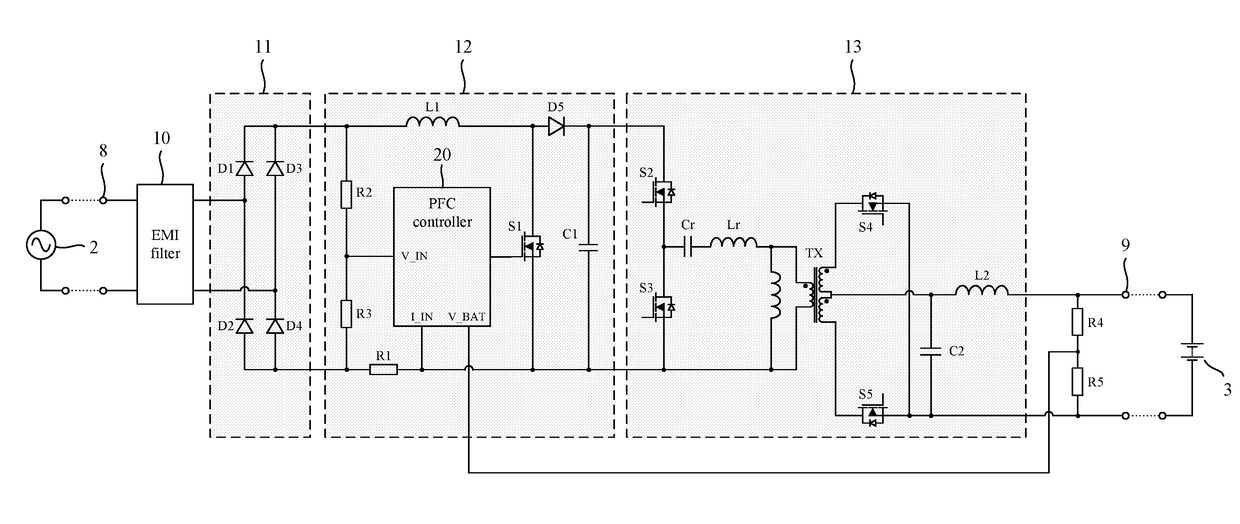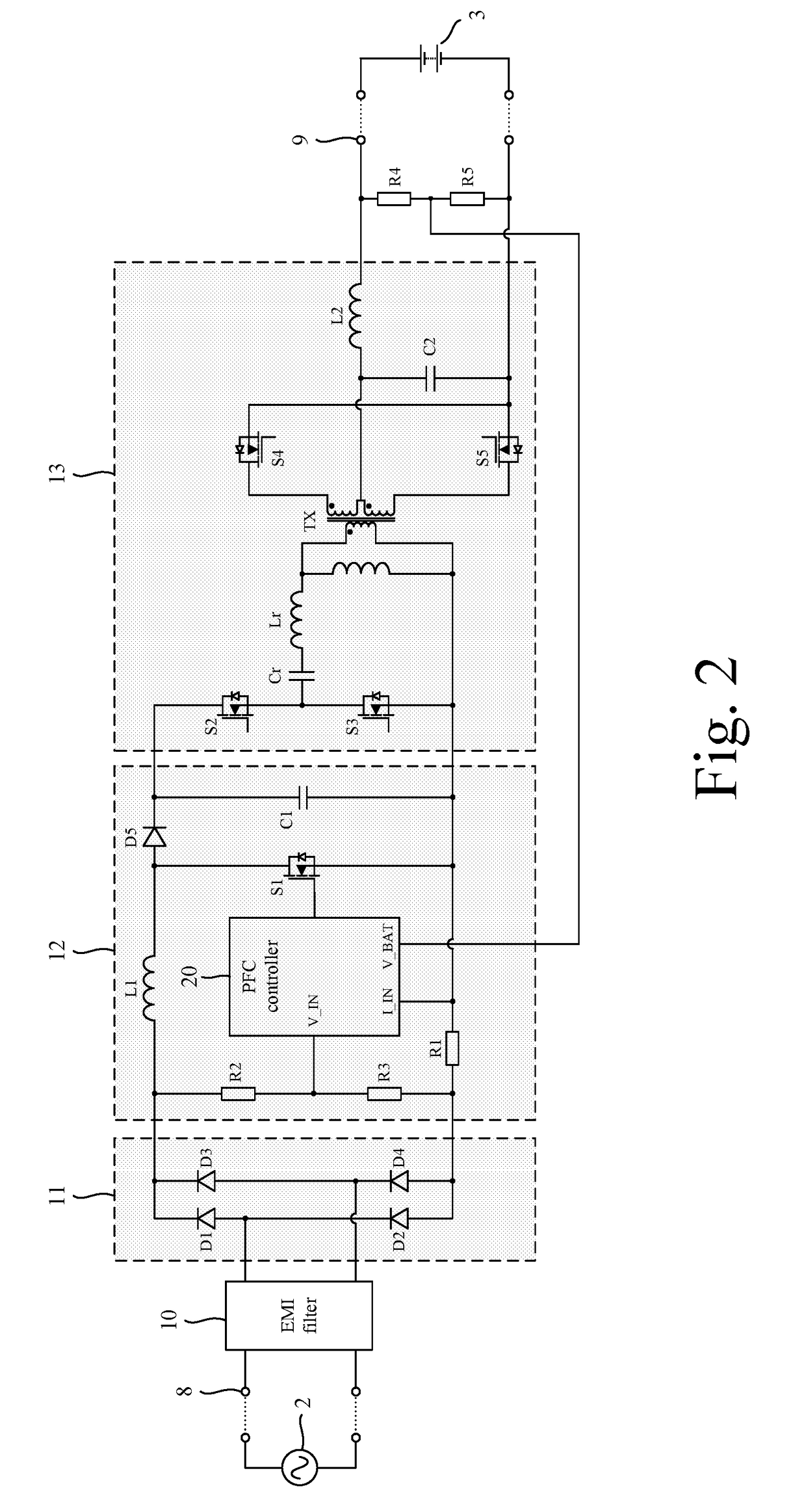Battery charger
a battery charger and battery technology, applied in the direction of energy-saving power electronics conversion, sustainable buildings, and electric variable regulation, can solve the problems of reducing the lifespan of the battery, increasing heating, and adversely affecting the electrolyte conductivity and electrochemical reactions at the electrode-electrolyte interface, so as to reduce the cost and size of the battery charger, and increase the capacitance
- Summary
- Abstract
- Description
- Claims
- Application Information
AI Technical Summary
Benefits of technology
Problems solved by technology
Method used
Image
Examples
Embodiment Construction
[0030]The battery charger 1 of FIGS. 1 and 2 comprises input terminals 8 for connection to an AC source 2, and output terminals 9 for connection to a battery 3 to be charged. The battery charger 1 further comprises an electromagnetic interference (EMI) filter 10, an AC-to-DC converter 11, a power factor correction (PFC) circuit 12, and a DC-to-DC converter 13 connected between the input terminals 8 and the output terminals 9.
[0031]The EMI filter 10 is used to attenuate high-frequency harmonics in the input current drawn from the AC source 2.
[0032]The AC-to-DC converter 11 comprises a bridge rectifier D1-D4 providing full-wave rectification.
[0033]The PFC circuit 12 comprises a boost converter located between the AC-to-DC converter 11 and the DC-to-DC converter 13. The boost converter comprises an inductor L1, a capacitor C1, a diode D5, a switch S1 and a control circuit. The inductor, capacitor, diode and switch are arranged in a conventional arrangement. Consequently, the inductor L...
PUM
 Login to View More
Login to View More Abstract
Description
Claims
Application Information
 Login to View More
Login to View More - R&D
- Intellectual Property
- Life Sciences
- Materials
- Tech Scout
- Unparalleled Data Quality
- Higher Quality Content
- 60% Fewer Hallucinations
Browse by: Latest US Patents, China's latest patents, Technical Efficacy Thesaurus, Application Domain, Technology Topic, Popular Technical Reports.
© 2025 PatSnap. All rights reserved.Legal|Privacy policy|Modern Slavery Act Transparency Statement|Sitemap|About US| Contact US: help@patsnap.com



